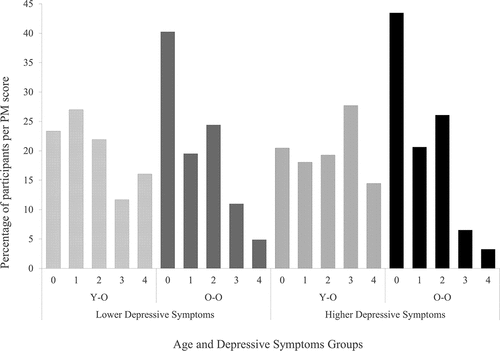Figures & data
Figure 1. Percentage of Participants per PM Score depending on Groups of Age and Depressive Symptoms.

Table 1. Descriptive Statistics and Bayesian T-Tests of Variables of Interest by Age, Depressive Symptoms, and Metamemory Representations Groups
Figure 2. Representation of the 3-way Interaction between Depressive Symptoms, Age, and MSE on PM Performance.

